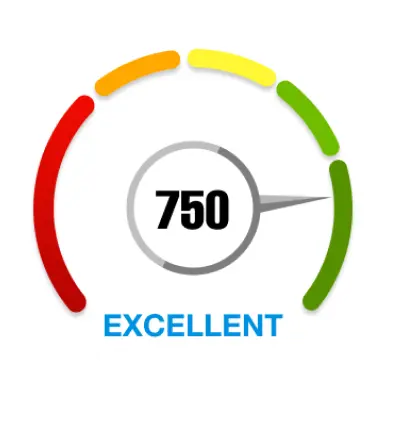Agricultural loans are the lifeblood of Indian farming, providing crucial financial assistance to farmers. These loans, offered by banks and government institutions, can be secured or unsecured, empowering farmers to invest in various agricultural endeavors. However, interest rates on agricultural loans vary considerably, influenced by loan type, borrower profile, and government subsidies. Understanding these intricacies and comparing offerings from diverse lenders is crucial for farmers to secure optimal financing at manageable costs.
List of Banks & Co-operative Banks Offering Agricultural Loan
Following are some of the major Cooperative Banks Offering agricultural loans in India:
| Top Lenders | Interest Rate | Major Agricultural Loans Offered |
|---|---|---|
| State Bank of India (SBI) | 7.25% p.a. onwards |
|
| ICICI Bank | 9.30% p.a. onwards |
|
| Central Bank of India | Up to 13.25% p.a. |
|
| Union Bank | 10.25% p.a. onwards |
|
| Axis Bank | 10.25% p.a. onwards |
|
| National Bank of Agriculture and Rural Development (NABARD) | 6.75% p.a. onwards |
|
| Karnataka Gramin Bank | 7.00% p.a. Onwards |
|
| Punjab National Bank | 7% p.a. onwards |
|
Read More
Read Less
Processing Fee on Agricultural Loans
Along with interest rates, processing fees are another important cost factor to consider when taking out an agricultural loan. Processing fees are charges levied by lenders to cover the administrative costs associated with evaluating and processing your loan application.
| Typical processing fee | 0% to 4% of the loan amount |
Not sure of your credit score? Check it out now!
Factors Affecting Agriculture Loan Interest Rates
The interest rates charged on agriculture loans are impacted by several key factors. These include government policy rates, market benchmarks, individual credit risk, the purpose of the loans, and repayment terms offered. Monitoring these influential factors provides insights into interest rate trends for vital agricultural financing needed by farmers and agribusinesses.
Here are some of the key factors that affect agriculture loan interest rates:
- Government policy rates: Rates set by the central bank and government banks/programs like the RBI, NABARD, and regional rural banks impact agriculture lending rates. Changes in government policy rates are usually reflected in agriculture lending rates.
- Market benchmark rates: Prime lending rates in the broader financial markets influence the interest rates lenders charge on loans to farmers. As market rates fluctuate, agriculture loan rates tend to move in the same direction.
- Credit risk: The financial strength and repayment capacity of individual borrowers affect the interest rates that the lenders will offer. Higher-risk borrowers typically pay higher rates. Factors like farm income, collateral, and credit score all contribute to the risk profile.
- Loan purpose: Interest rates can vary depending on what the loan will be utilized for. Capital investments, production costs, machinery, and real estate may have different associated rates.
- Loan terms: Longer repayment periods, amortization timeline, and installment structure can impact rates offered. Short-term loans often have lower interest rates.
Tips To Get Agricultural Loan At Low-Interest Rate
Here are some tips to get an agricultural loan at a low-interest rate:
- Improve your credit score: Lenders check credit scores to determine risk and set rates. Maintaining a score above 720 will qualify you for the best rates. Pay bills on time and correct errors on your credit report.
- Lower your debt-to-income ratio: Keep outstanding debts low relative to your income. A ratio below 30-40% improves eligibility for competitive pricing.
- Offer collateral: Providing assets as security for the agricultural loan can result in a lower interest rate. Land, equipment, livestock, etc. can be used as collateral.
- Take a shorter loan tenure: Opt for a repayment period of 5-10 years instead of 15-30 years. Shorter terms are perceived as lower risk by lenders.
- Make a larger down payment: Put down 20% or more of the loan amount needed. This lowers the Loan-to-Value ratio which makes lenders feel more secure.
- Establish a banking history: Doing business with a lender over time allows them to understand your financial habits. This may translate to better rates.
Following these tips demonstrates you are a low risk for default. This makes lenders more likely to extend their most competitive interest rates.
Need a personal loan?
Frequently Asked Questions
Several factors influence rates, including loan type, borrower profile, lender type, macroeconomic conditions, and government subsidies.
Both exist. Fixed rates offer stability, while variable rates can fluctuate based on market conditions.
Yes, depending on your credit score, loan amount, and market competition. Always negotiate for the best deal.
It varies, but generally ranges from 7% to 15% p.a. in India, with government loans offering lower rates.
Maintain a good credit score, compare rates from multiple lenders, negotiate terms, and consider government subsidies.
Some lenders charge prepayment penalties, but check your loan agreement and inquire beforehand.
Display of trademarks, trade names, logos, and other subject matters of Intellectual Property displayed on this website belongs to their respective intellectual property owners & is not owned by Bvalue Services Pvt. Ltd. Display of such Intellectual Property and related product information does not imply Bvalue Services Pvt. Ltd company’s partnership with the owner of the Intellectual Property or proprietor of such products.
Please read the Terms & Conditions carefully as deemed & proceed at your own discretion.






 Rated 4.5 on Google Play
Rated 4.5 on Google Play 10M+ App Installs
10M+ App Installs 25M+ Applicants till date & growing
25M+ Applicants till date & growing 150K+ Daily Active Users
150K+ Daily Active Users